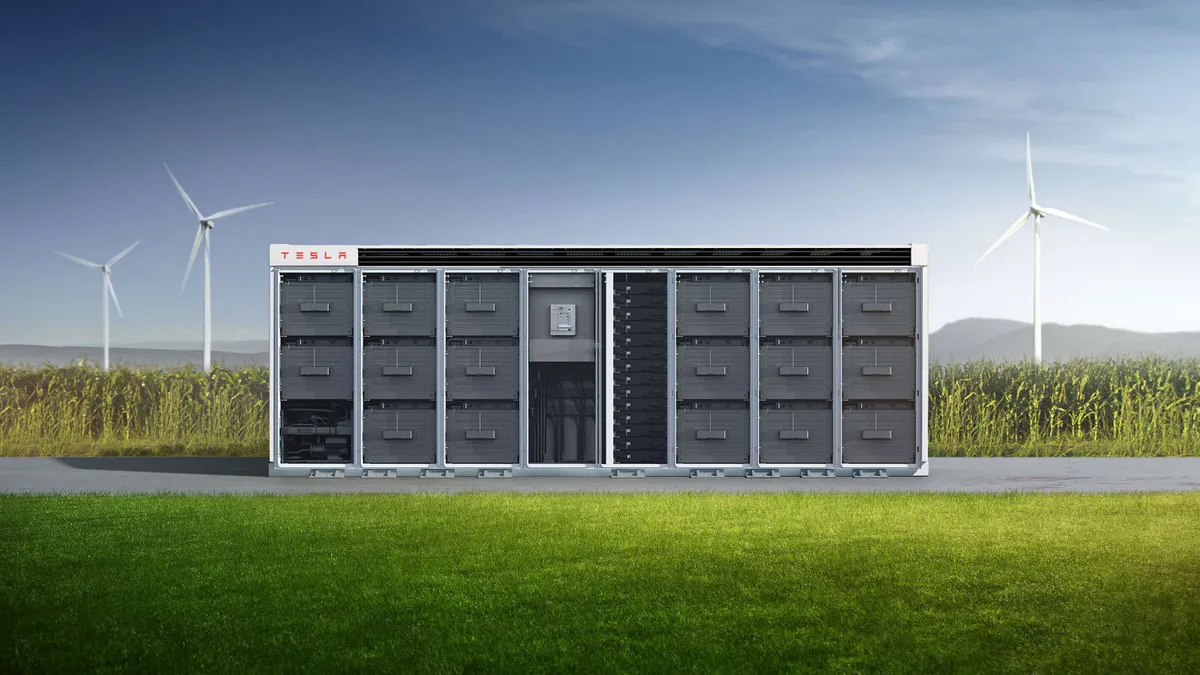Dive Brief:
- The U.S. is a leader on energy storage, with deployments projected to reach 600 GWh by 2031, according to Wood Mackenzie’s Global Energy Storage Outlook released last month. The country is expected to see average annual installations of 54 GWh through 2031 and become a 27 GW annual market by that time.
- Storage additions slowed in the U.S. starting in the second quarter of this year because of the investigation of a solar panel dumping complaint filed with the Department of Commerce. Wood Mackenzie projects energy storage demand will drop by about one-third this year and in 2023 because so many energy projects are co-located with big solar plants.
- The U.S. and China represent 75% of global storage demand, according to Wood Mackenzie. China is in second place behind the U.S. for projected energy storage deployments, with 422 GWh expected to be installed by 2031.
Dive Insight:
While energy storage is projected to continue climbing in the U.S. and China this decade, it’s expected to stagger in Europe as the region’s grid-scale energy market works to stabilize amid recent disruptions, Wood Mackenzie concluded in its latest energy storage outlook released July 28. It lowered its forecast for European storage deployments to 159 GWh by 2031.
That is causing global energy storage to slow, with total installations projected to reach 500 GW/1,396 GWh by 2031, the storage outlook concludes.
“Growth has stalled in Europe as regulatory barriers fail to improve storage project economics,” and because of limited access to power markets and a lack of capacity market auctions, according to Dan Shreve, global head of energy storage at Wood Mackenzie.
But storage deployments are projected to keep rising in the U.S. and China for similar reasons. “Similar to U.S. state policy, China implemented a national policy to accelerate energy storage deployments with a target to take its energy storage capacity to at least 30 GW by 2025,” Shreve wrote in an email.
However, a California solar company’s claim pushing for anti-dumping and countervailing duties on solar panels imported from Southeast Asia because they include Chinese components is causing energy storage in the U.S. to take a hit. Wood Mackenzie projects a 34% fall in demand this year and a 27% drop in 2023.
Storage deployments are impacted by the slowdown in large solar facility installations because many are paired with storage. About 35% of 2022 hybrid grid-scale installations were delayed, Shreve said.
The expected second quarter market additions for the U.S. is a total 11 GW/39 GWh, according to Shreve.
California and Texas will capture about half the national market through 2026. “Nevada, Arizona and New York round out the top five states for energy storage deployments through 2026,” and are expected to be about 15% of the market by 2026, he added.
In spite of the lackluster European storage market, Germany is the world’s third largest storage market. Wood Mackenzie forecasts installations will rise to 32 GWh by 2030, with 61% of that from the residential segment.
The key growth engine is the “German Easter Package that targets 80% renewables share in power supply supported by 215 GW of cumulative installed solar PV capacity by 2030,” Shreve said. There is a propensity to pair storage with solar to reduce curtailments of excess solar production and developers can “more effectively forecast firming requirements versus wind plus storage hybrids given the more volatile production patterns of wind energy,” Shreve explained.














